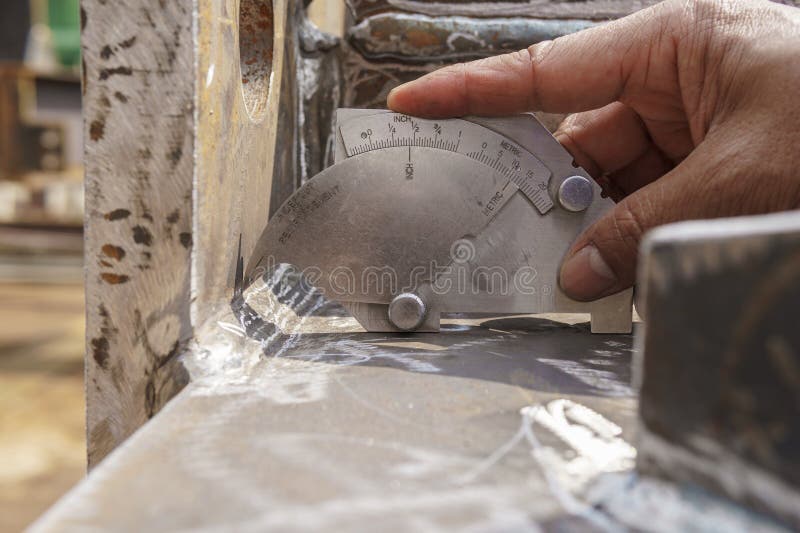Ingenious Tools and Methods for Accurate Gauge Fillet Weld Measurements
Ingenious Tools and Methods for Accurate Gauge Fillet Weld Measurements
Blog Article
Fillet Weld Design Strategies: Maximizing Joint Performance and Aesthetics for Structural Integrity
In the realm of architectural engineering and construction, the importance of fillet weld style methods can not be overstated. By thoroughly thinking about elements such as weld profile optimization, material option, joint preparation methods, welding process performance, and aesthetic improvement designers, techniques and makers can accomplish a harmonious equilibrium between performance and look in their welded frameworks.
Weld Profile Optimization


Accomplishing an optimum weld account entails a thorough factor to consider of factors such as material thickness, joint configuration, welding setting, and desired welding rate. In addition, the option of proper welding parameters, such as voltage, current, and take a trip rate, is fundamental in regulating the form and dimensions of the fillet weld. Using sophisticated welding strategies, such as pulse welding or robot welding, can further improve the weld account to meet certain design demands and quality criteria.
Essentially, weld account optimization is a basic aspect of fillet weld layout that directly influences the overall efficiency and reliability of bonded joints in structural applications.
Product Selection Factors To Consider
When thinking about material option for fillet weld style, the compatibility of the base metals is a critical aspect influencing the structural honesty of the joint. It is important to select products that not only bonded with each other effectively yet also possess comparable mechanical buildings to guarantee the lots is evenly dispersed in between the weld and the base metals. Welding products with significantly different residential properties can cause issues such as stress and anxiety concentrations, premature joint failure, or cracking.
Furthermore, the setting in which the welded structure will run must be thought about when picking products. Factors like rust resistance, temperature level fluctuations, and exposure to chemicals can all affect the long life and efficiency of the weld joint. By selecting materials that are suitable for the intended application and atmosphere, the general sturdiness and integrity of the bonded joint can be considerably boosted.
Therefore, thorough consideration of material compatibility and environmental factors is vital in making certain the weld joint's toughness, durability, and overall structural integrity.

Joint Preparation Methods
Considering the essential function product option plays in making sure the architectural integrity of fillet weld joints, it is read crucial to execute specific joint preparation methods that maximize the connection in between the base steels. Joint preparation is an essential action that straight influences the quality and toughness of the weld. One fundamental method is the cleansing of base steels to get rid of any kind of pollutants like rust, oil, or paint that might endanger the weld's honesty. This can be achieved with techniques such as grinding, cord brushing, or chemical cleansing.
Furthermore, tack welding the components in place prior to the final weld helps keep positioning and reduces distortion during the welding process. By carefully following these joint prep work methods, welders can enhance the total performance and looks of fillet weld joints while making sure structural soundness.
Welding Refine Effectiveness
Efficient welding procedures are important for accomplishing optimum efficiency and quality in fillet weld construction. One essential facet of improving welding procedure effectiveness is selecting the ideal welding method. Variables such as material kind, joint style, and welding placement need to be carefully considered to identify one of the most suitable approach. As an example, processes like gas steel arc welding (GMAW) and flux-cored arc welding (FCAW) are frequently utilized for fillet welds due to their adaptability and rate (Gauge Fillet Weld).
In addition, guaranteeing correct devices setup and upkeep is important for efficient welding. Routine calibration of welding devices, inspection of consumables, and upkeep of welding torches can stop downtime and revamp, inevitably conserving time and resources. Furthermore, using experienced welders with experience in the specific welding process being used can substantially impact effectiveness. Well-trained welders are much more proficient at changing specifications, fixing problems, and preserving constant weld high quality.
Visual Enhancement Methods
To maximize the quality of fillet weld construction, applying aesthetic improvement techniques can play a vital duty in hop over to these guys ensuring accuracy and precision during the welding process. Visual help such as weld size evaluates and multiplying lenses can aid in analyzing weld accounts and measurements properly. By incorporating these aesthetic enhancement methods into the welding procedure, welders can attain not just structurally sound fillet welds however additionally aesthetically enticing outcomes that meet sector criteria.

Conclusion
Finally, maximizing fillet weld layout includes careful factor to consider of weld account, product choice, joint preparation, welding process performance, and visual enhancement methods. By implementing these methods, architectural honesty can be enhanced while likewise accomplishing aesthetic appeal. It is look at here now vital to focus on both efficiency and aesthetics in fillet weld design to ensure the total top quality and sturdiness of the joint.
By thoroughly taking into consideration factors such as weld profile optimization, material choice, joint prep work techniques, welding procedure efficiency, and aesthetic enhancement techniques, makers and designers can achieve an unified equilibrium between capability and look in their welded frameworks.In the realm of fillet weld design, enhancing the weld profile plays an essential role in ensuring architectural honesty and efficiency. The weld account, which includes the size and shape of the weld cross-section, straight influences the circulation of anxiety and load-bearing capacity within the joint. It is vital to select materials that not just bonded together efficiently but also have similar mechanical residential properties to guarantee the tons is equally distributed between the weld and the base steels - Gauge Fillet Weld.In conclusion, enhancing fillet weld style includes careful consideration of weld profile, product choice, joint prep work, welding procedure effectiveness, and aesthetic improvement methods
Report this page